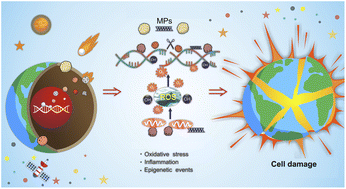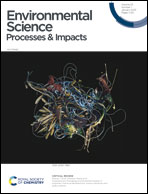The geno-toxicological impacts of microplastic (MP) exposure on health: mechanistic pathways and research trends from a Chinese perspective
Abstract
Due to their large-scale manufacture and widespread application, global concern regarding microplastics (MPs) has been increasing rapidly over the past decade, in particular their potential genotoxicity. The genome is constantly exposed to genotoxic insults that can lead to accumulation of reactive oxygen species (ROS), DNA damage, cell death, inflammation or genetic regulation which in turn can have consequences for health, such as the induction of carcinogenesis. In this review, we presented a comprehensive landscape of the effects of MPs on genotoxicity including the molecular mechanisms. Followed by the MP research trend analysis from a global viewpoint including the comparative research between China and USA and point out that scientists should continue to substantially contribute to the field of MPs through more extensive academic investigation, global cooperation, and the development of novel control methods. Challenges are also discussed. Overall, this review provides insights into the genotoxic effects of MPs on human health and related research trends in this field.



 Please wait while we load your content...
Please wait while we load your content...